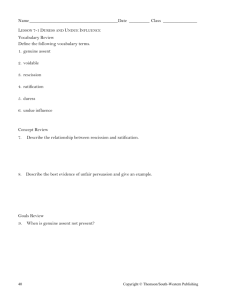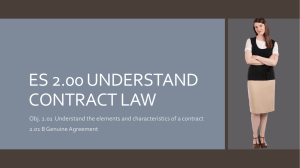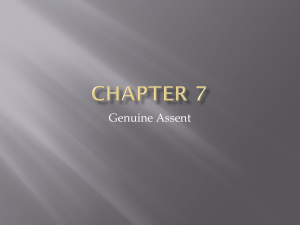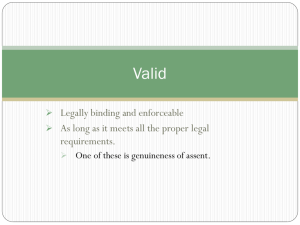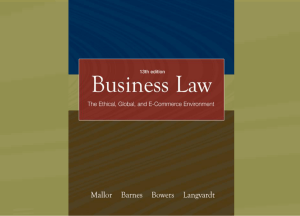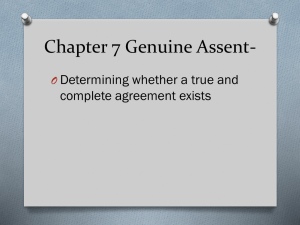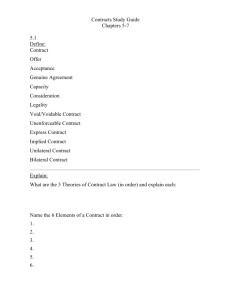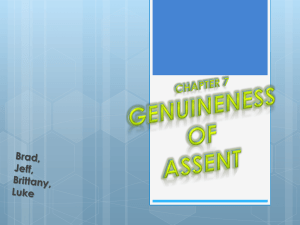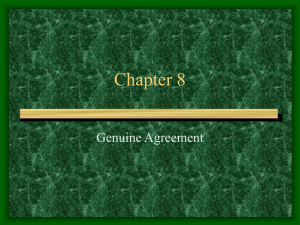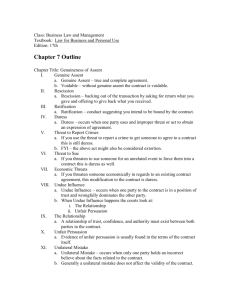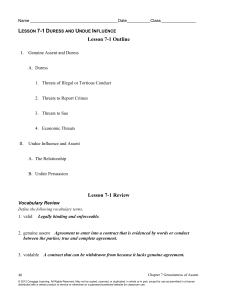Chapter 8 Genuine Agreement Questions
advertisement
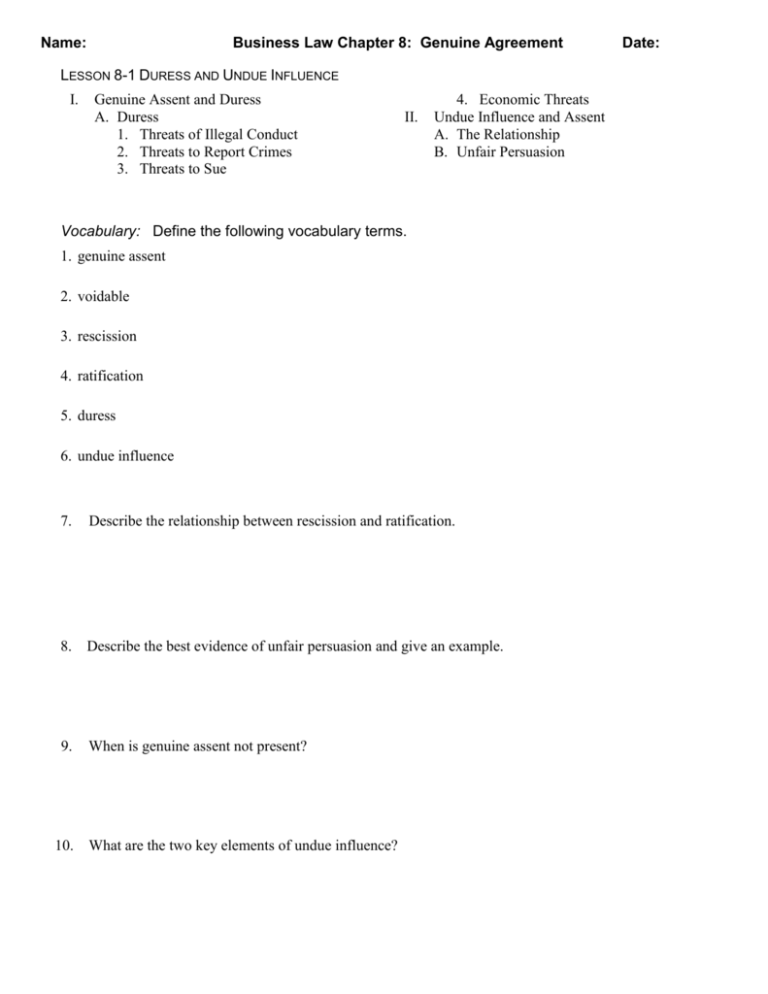
Name: Business Law Chapter 8: Genuine Agreement LESSON 8-1 DURESS AND UNDUE INFLUENCE I. Genuine Assent and Duress A. Duress 1. Threats of Illegal Conduct 2. Threats to Report Crimes 3. Threats to Sue II. 4. Economic Threats Undue Influence and Assent A. The Relationship B. Unfair Persuasion Vocabulary: Define the following vocabulary terms. 1. genuine assent 2. voidable 3. rescission 4. ratification 5. duress 6. undue influence 7. Describe the relationship between rescission and ratification. 8. Describe the best evidence of unfair persuasion and give an example. 9. When is genuine assent not present? 10. What are the two key elements of undue influence? Date: LESSON 8-2 MISTAKE, MISREPRESENTATION AND FRAUD I. II. What Are the Types of Contractual mistakes? What Is Misrepresentation? A. Untrue Statement of Fact 1. Active Concealment 2. Silence B. Materiality C. Reasonable Reliance III. Fraud and Remedies for Fraud A. The Misrepresentation Must Be Intentional or Reckless B. The Misrepresentation or Concealment Must Injure C. Remedies for Fraud 1. Rescission 2. Damages 3. Punitive Damages Vocabulary: Define each of the following vocabulary terms. 1. unilateral mistake 2. mutual mistake 3. material facts 4. fraudulent misrepresentation 5. fraud 6. Describe three ways a party may make a unilateral mistake. Do these make a contract voidable? 7. What is the difference between an innocent misrepresentation and a fraudulent misrepresentation? 8. If there is intentional misrepresentation, but no injury, is there fraud? Can the contract be rescinded? Should it be rescinded? 9. What kinds of mistakes can make a contract void or voidable? 10. Describe the conditions for misrepresentation to occur. 11. Describe the conditions for fraud to occur. ANALYZE REAL CASES Choose three questions from ANALYZE REAL CASES on page 128. Answer them below.
